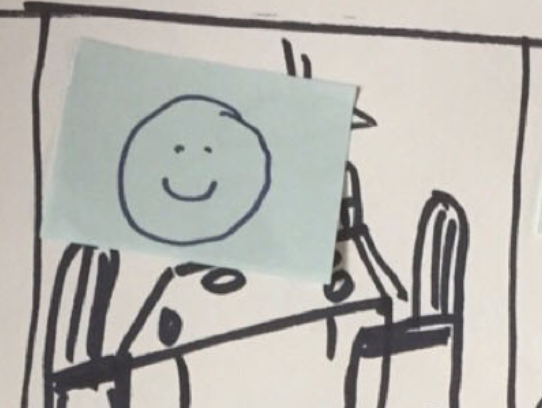Categories
Currently, there are three types of scaling movements that tend to dominate the literature: scaling-up, scaling-out, and scaling-deep. Proposed solutions that promise one or more types, are more likely to be preferred by funders than those that don’t.

Source: Darcy Riddell and Michele-Lee Moore (2015)
1) Scaling-up consists of shifting the laws and policies of systems in order to either remove oppressive precepts, or to introduce game-changing rules that will bring social benefit to large numbers of people.
2) Scaling-out is about growing or replicating a solution to other geographic areas, including lateral scaling to new target populations.
3) Scaling-deep involves activations intended to promote transformation at the sociocultural level of individuals, organizations or communities.
Scaling-up and out are often confused and the terms used interchangeably, probably because they are fundamentally about spreading or growing solutions in order to bring social benefit to as many people as possible; they are about numbers.
Whereas these forms of scale dominate the social innovation literature, little is comparatively said about scaling-deep. Scaling-deep recognizes that there is power in transforming culture. It acknowledges that interventions at the level of meaning and culture can prove powerful axes for levering change. Sadly, there are relatively few solutions that are attempted in this space and even fewer of which are understood by funders or investors.
We argue that:
- These three conceptual models of scale are not exhaustive and that there are additional ways to think about scale: scree-scaling and the scaling of conditions (versus solutions).
- The normative privileging of solutions that can scale out or up is short-sighted and can actually impede impact.
We propose that if we are to use the language of scale—and we think it is a legitimate way to think about social impact—we add two other critical form of scale, Scree-scaling, and Scaling initial conditions.
4) Scree-scaling. This conception of scale is less about growing and spreading single solutions and more about legitimizing and cultivating many “small” ones. It represents the view that system change is less likely to occur as a result of a few big ideas than by the accumulation of many little ones.
The proliferation of local solutions not only results in more relevant services that are more likely to achieve results, but they supply the larger system with a pluralistic menu of creative approaches and they put pressure on that system to be able to sustain and support them. They also begin to shift cultural norms and expectations because there are a lot more agents driving new visions, rather a handful of visions being introduced and/or imposed by a few.
Yes, we should glean what we can from small solutions in order to share and disseminate creative approaches to complex challenges and, when we can, accomplish scale with some of them. But the signature of a worthy idea is not necessarily that it is scalable. Not every private business is scalable nor is it desirable to scale every business. The backbone of national economies is small businesses, not giant corporations, and the seduction of the growth model is as problematic in the social sector as it is within the private sector.
A preoccupation with populating the innovation landscape with scalable ideas is actually inimical to achieving the deeper system change because (1) it limits creativity to ideas that work across multiple geographies, conditions and populations—a far more restrictive criterion than one that invites ideas to proliferate in diverse local contexts; (2) given the complexity and diversity of human beings and the social landscapes they inhabit, we see the need for pluralistic solutions, not homogenous ones that need to be retrofitted to different contexts; (3) emphasizing and supporting only scalable solutions deprives social change of the power of small solutions to have a cumulative effect; (4) the more system change or improved outcomes rests in the hands of a few, the less likely it is to occur; the more everyone can play a role, irrespective of the size or scope of their solution, the more we will see the change we are after.
A sociocultural landslide is not about the few boulders loosened down a gorge, it is about the millions of stones that sweep down like a tide and transfigure the landscape. In the end, as compelling and inspirational as single, scaled solutions can be, it’s not just about the few—it’s about the many.
5) Scaling initial conditions. Within the private sector there are a range of public and private mechanisms to support and scale innovation—access to capital, data, talent and connectivity (knowledge dissemination and networking).
None of this infrastructure exists within the social sector, or at least, not in any sort of coherent way. If we want to see a verdant proliferation of solutions, and if we want to see them succeed, we need to attend to the ground that gives birth to them and that nourishes them.

Adding two conceptions of scale to the framework proposed by Darcy Riddell and Michele-Lee Moore (2016)
Program grants for innovation are limited are unsuitable for many reasons, not the least of which is that they invest in projects and not infrastructure. Applications ask for solutions that are ready to be delivered, but innovation emerges out of a social R&D engine that begins with questions (What is the problem? What assumptions, values, conditions and practices are sustaining it? What ideas might work? What interactions can we test?). Applications typically require respondents to identify multi-year activities, objectives and outcomes; social R&D is about making frequent pivots based on ongoing insights.
Worse, there is an assumption that organizations have the capacity to deliver innovation, as though running a new program or pilot is the equivalent of engaging in innovation.Nothing could be further from the truth. With few exceptions, we would argue that the public sector, non-profits and charities lack the culture, competencies, capacities and resources to engage in meaningful social R&D. As such, the ambition for innovation is severely hampered.
Social service organizations are not designed to develop novel solutions, nor to embed these solutions into their organizations and to continuously iterate them. Were a novel solution to emerge, it would be operationalized within a bureaucratic ethos that cannot help but neutralize what makes it unique. A truly novel idea will cut against the grain of most every function within an organization—human resources, risk management, communications, finance, philosophy and values, etc. It will chafe fiercely, and complicated systems have an internal imperative to achieve internal coherency and consistency. The cultures and competencies required for delivery are simply not the same as those required for development.

It is unreasonable to expect innovation to occur when there is no discernable social R&D infrastructure and when those proposing solutions are managers steeped in the service paradigm. Where consultancies do enter the picture, they tend to produce small, project-based solutions, but do not influence or contribute to organizational capacity for ongoing social R&D.
If we want to see more innovative solutions, we need to scale the conditions that produce and nourish them. It’s not about a few good ideas that somehow make it; it’s about tending the ground that could produce a bounty. By building a social R&D infrastructure within the public/social sector, we nourish the conditions from which many innovations can grow and find purchase.



